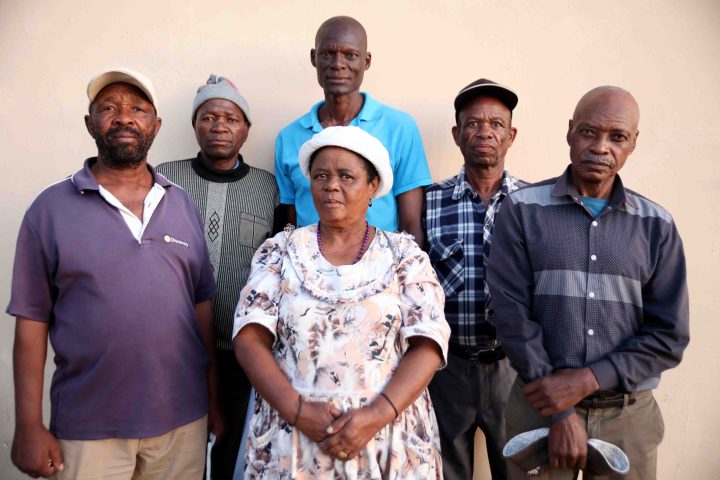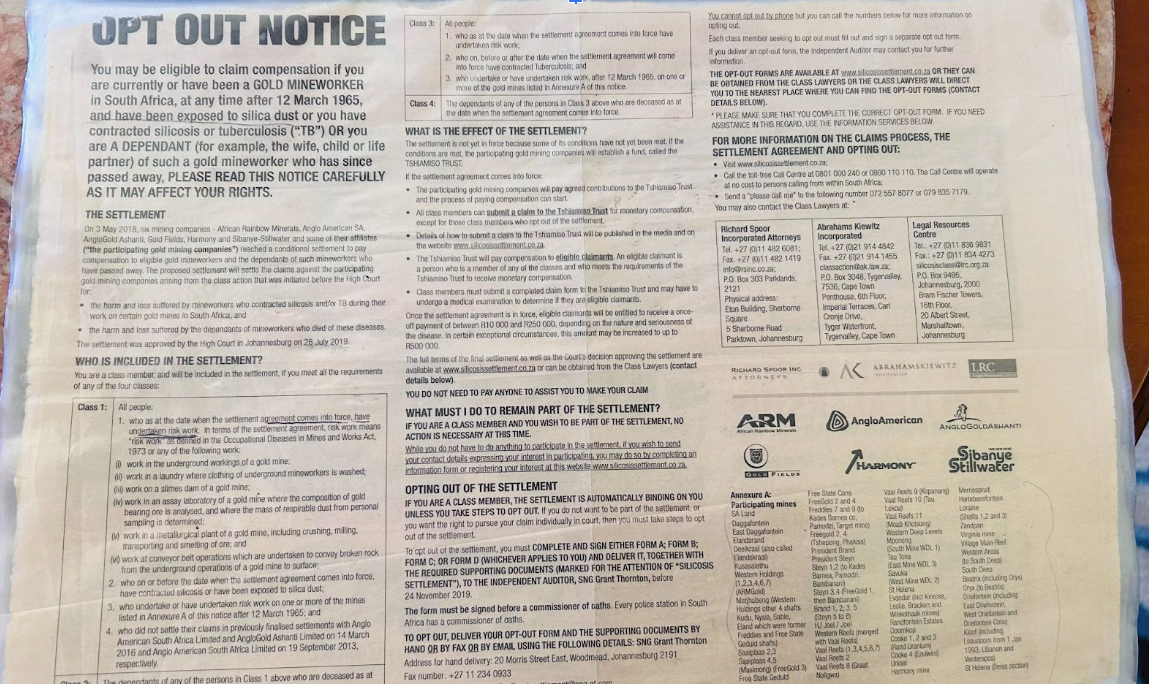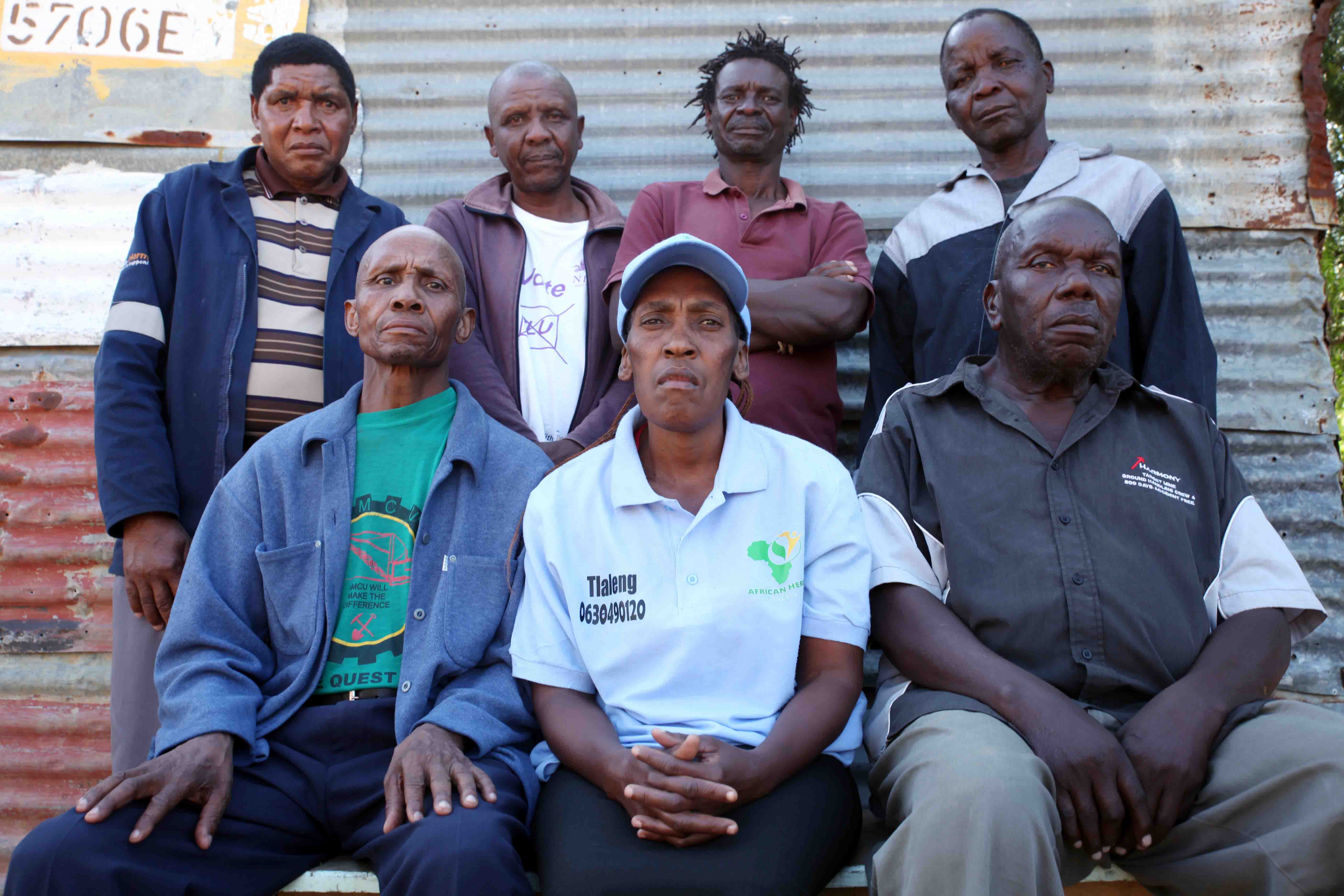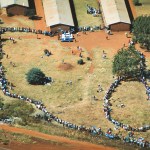TSHIAMISO TRUST (PART TWO)
Apartheid’s gold mines: Landmark R5bn class action to compensate ex-miners with lung disease a mark of ‘symbolic justice’

In a landmark class action victory exactly five years ago that led to the establishment of the Tshiamiso Trust, gold miners who became ill from their work underground were promised payouts that would change their lives, and ease their pain and suffering. But for many ex-gold miners and their dependants, their pain became aggravated when trying to claim. In Part Two of this special report, Daily Maverick attempts to understand the administration issues and inconsistencies, and has followed up with the Tshiamiso Trust and Richard Spoor, the claimants' agent, regarding the Tshiamiso Trust Deed. The trust also responds to some of the issues raised by claimants in Part One.
The Tshiamiso Trust recently hit the R1-billion milestone since it began paying out workers who contracted silicosis and TB while working in South Africa’s gold mines. However, claimants say the payout amounts are paltry and do not compensate for the years of poor health they have had to endure. Many claimants are still awaiting compensation.
Read Part One here:
While the media publicly refers to a R5-billion settlement as the overall payment from which each eligible claimant is meant to individually draw their share of compensation, George Kahn, director-general at Richard Spoor Inc Attorneys, told Daily Maverick that “the settlement total is actually uncapped and may far exceed the estimated R5-billion by the end of the Trust’s life, if enough eligible claimants come forward”.
The Tshiamiso Trust has a lifespan of 12 years, ending in February 2031.
TB and silicosis payouts are ‘symbolic justice’ for ex-gold miners.
According to Kahn, the settlement is to provide ‘some form of justice’ for unjust events that occurred during apartheid; it does not serve as compensation for all apartheid injustices.
While there are many varying perceptions as to what the Tshiamiso Trust represents, Richard Spoor Inc translates the purpose of Tshiamiso through its Trust Deed, the settlement agreement and the two high court judgments confirming the settlement and the Trust as a fair and equitable compromise outcome from the prior class action against the gold sector in 2012. The Trust’s purpose is not to fully rectify the harm done, as most eloquently explained by the high court in its one judgment:
“[37] In this case the compensation amounts each eligible claimant would receive are not insubstantial, while the total amount to be paid to all of them is certainly sizeable. It is expected to be in the range of R5bn but could be more. The settling companies cannot be accused of failing to appreciate the gravity of the harm the claimants have suffered. Given the nature of compensation in a class action — where the amount paid to a claimant is likely to be based on one size fits all — it would be wrong to seek the perfect amount to be awarded to each claimant. Such a task would be an exercise in futility. All that can be achieved is a sum that bears a close resemblance to the harm suffered. Mr Spoor informed us that the ‘settlement is not intended to, and indeed could never, make full redress for the loss and the harm suffered by the gold mine workers, their families and communities over 100 years as a result of the epidemic of lung disease that afflicted them and the system of migrant labour and racial discrimination that sustained this epidemic.’ This is incontrovertible. After all, as the German philosopher, Immanuel Kant noted: ‘Out of the crooked timber of humanity no straight thing was ever made’.” – Vally J
The Trust, which has been in existence since February 2020, was created to give effect to the R5-billion settlement agreement between African Rainbow Minerals, Anglo American South Africa, AngloGold Ashanti, Harmony Gold, Sibanye Stillwater and Goldfields and claimant attorneys in the landmark silicosis and TB class action lawsuit.
For Kahn, the main bottleneck to reaching and then breaching the R5-billion estimate is poor communication, insufficient education and evidence for occupational diseases, the limited budget of the Trust for administration and medicals, and the thousands of opportunistic persons coming forward as claimants. Kahn said those who are not eligible for one of these highly specific occupational diseases are clogging up the queue for compensation for legitimate claimants.
But why would opportunistic persons come forward?
The initial Op-Out Notice suggested that anyone who worked as a gold miner or at the stipulated gold mines, at any period between 12 March 1965 to 10 December 2019 and was exposed to silica dust or contracted silicosis or TB, was eligible. The notice did not clarify that compensation was reserved for only permanent lung damage for prospective claimants who had contracted this occupational disease which is still active in their bodies.

The Opt-Out Notice, extracted from the Daily Sun newspaper.
Complicated Trust Deed
In addition to the Op-Out Notice being misleading and open to abuse, the Trust Deed is so complicated that few people actually understand it. This is a sentiment that Daily Maverick picked up from some 30 interviews with prospective claimants. As it is, there are not enough resources available to educate and share information with the affected in many communities about their rights, which has resulted in misunderstandings and the spread of misinformation.
Compensation reserved for permanent lung damage only
According to the Tshiamiso Trust, compensation is reserved for permanent lung damage as a result of cardio-respiratory or pulmonary TB and silicosis, which is a lifelong chronic condition.
So far, the Trust has paid out just over R1-billion to 11,971 claimants. To date, over 100,000 mine workers or their families have lodged claims at 51 sites.
The most paid cluster is Tshiamiso silicosis class 1 with already 8,607 claimants having received settlements, according to the Trust. While eligibility criteria for TB claimants remain stringent — as the Trust argues it is a curable disease — silicosis enables automatic eligibility.
However, research suggests past TB history is a risk factor for long-term respiratory impairment and lung dysfunction in patients, which often goes unrecognised, despite its relatively high prevalence and its association with reduced quality of life. Silicosis in turn contributes to mine workers’ vulnerability to TB infection and recurrence post-employment.
Understanding the settlement, its clusters and how the payout works
The Trust has set maximum compensation amounts, which were increased on 1 February 2023 in line with the Consumer Price Index (CPI). Claims are certified for one of the compensation classes:
Silicosis claims for living mine workers
- Silicosis Class 1 (early stage) – Up to R74,890.22
- Silicosis Class 2 (1st Degree) – Up to R160,479.04
- Silicosis Class 3 (2nd Degree) – Up to R267,465.07
- Special Award (reserved for a few) – Up to R534,930.14
Silicosis claims for deceased mine workers
- Dependent Silicosis Claimant Category A (mine worker died from silicosis) – Up to R106,986.03
- Dependent Silicosis Claimant Category B – Up to R74,890.22
Tuberculosis claims for living mine workers
- First-degree Tuberculosis – Up to R53,493.01
- Second-degree Tuberculosis – Up to R106,986.03
Historical tuberculosis claims for mine workers deceased after 10 Dec 2019
- Tuberculosis with no degree specified – Up to R10,698.60
- First-degree Tuberculosis – Up to R53,493.01
- Second-degree Tuberculosis – Up to R106,986.03
Dependant tuberculosis claims for mine workers deceased before 10 Dec 2019
- Dependant Tuberculosis Claimant (mine worker died from TB within a year of the last qualifying shift) – Up to R106,986.03.
Lusanda Jiya, Acting CEO of Tshiamiso Trust, told Daily Maverick: “The amounts may be reduced based on the risk work done on non-qualifying mines, outside of the qualifying periods, including if the qualifying gold mine changed ownership between 1965 and 2019. It should be noted that a mine worker who qualifies for a benefit and worked at one or more qualifying mines during the qualifying period for 30 years or more will be paid the full amount of compensation due for the relevant class of qualifying silicosis or TB. No Payment Benefit Modifiers will be applied.
“The Tshiamiso Trust may also be required to deduct income tax from the Net Benefit Amount. This will usually happen if a claimant was previously retrenched based on a permanent disability that is compensable by the Tshiamiso Trust. If an income tax deduction applies to the claim, the Tshiamiso Trust Finance department is required to pay that deducted amount over to the South African Revenue Service (Sars) on the claimant’s behalf. The claimant will receive a notification if an income tax deduction applies to his or her claim.”
Claims process
While Jiya did not clarify the settlement priorities, she said each claim goes through an eight-step claims process before it can be approved for payment.
This includes the widely debated Medical Certification Panel which issues a Certificate of Medical Finding, showing if a claim is eligible (approved) or ineligible (rejected).
Claimants who have interacted with Daily Maverick have accused the medical certification panel of misdiagnosing, and incorrectly classifying the medical findings of claimants for compensation, which results in rejection or delays and comes at a cost of R950. They have further argued that the panel disapproves of its results being assessed by outside experts or for claimants to bring medical reports from independent practitioners and sometimes reject the Medical Bureau for Occupational Diseases (MBOD) reports.
This is despite the Trust claiming to be working in hand with MBOD, Teba and accepting medical reports from MBOD and Occupational Diseases in Mines and Works Act (ODMWA).
“ODMWA certificates are accepted as sufficient evidence under certain conditions, and claimants may then be given the option to have their claim certified using this as the basis, or proceeding with a medical examination. Some claimants may prefer to go for a medical examination because their condition may have worsened, especially for silicosis claims,” said Jiya.
In the Trust’s defence, Jiya said the only time that claimants need to pay for a medical examination is if they have done less than five years of risk work at a qualifying mine during a qualifying period. She said that, if the claimant is found to be medically eligible for compensation, the cost of the medical examination is paid back to them.
In the case of dependants claiming on behalf of a deceased ex-mine worker, Jiya said: “Unabridged death certificates are unfortunately often necessary to prove the cause of death, given that death certificates frequently exclude this important information, merely stating ‘natural causes’.”

A group portrait of people who worked at a mine and have not yet been compensated by Tshiamiso Trust. Welkom, Free State. (Photo: Kabelo Mokoena)
Bridging the gaps
While history has it that most of the ex-mine workers who started work before 1994 had not acquired education, it was reported in 1996 that about 80% of all mine workers had not acquired education at Grade 7 school level, rendering them functionally illiterate and innumerate. Consequently Trust processes and information published on social media platforms and their webpage, which is regularly updated, are often inaccessible or unintelligible to mine workers.
In addition, the Trust office’s address information is not readily available on its website, except for the call centre numbers whose agents are said to be ‘arrogant’, according to prospective claimants.
Daily Maverick asked what Tshiamiso is doing to bridge the digital divide in making sure ex-miners or their dependants are knowledgeable of the processes and what is required of them — while also being treated with dignity in the process of claiming their settlements.
Jiya responded, “The main points of contact are our 50 lodgement centres, operated through Teba, and the call centre, which currently handles over 7,200 calls per month on average. Updates at key points in the claims process are delivered to claimants via SMS. WhatsApp, social media and email are popular channels used by thousands of claimants who do have access to internet services.
“With the Eastern Cape being a key focus for us, we initiated a pilot project there last year, with a team of “Community Assistants” making their way throughout the province to reach underserviced areas and engage with claimants and potential claimants there. The Trust collaborates with Mineworker Provident Fund and MBDO in outreaches and roadshows to bring the services closer to people, especially in the outskirt areas. We also rely on relationships with various stakeholders, such as ex-mine workers’ associations, who assist with getting information to community members.”
In January of 2023, the Department of Health launched a national campaign to track, trace and pay former mine workers’ unclaimed benefits, including provident funds and compensation for lung diseases contracted on the job.
The campaign kicked off in the northern parts of KwaZulu-Natal and is said to be moving to other provinces countrywide. DM















 Become an Insider
Become an Insider
Comments - Please login in order to comment.